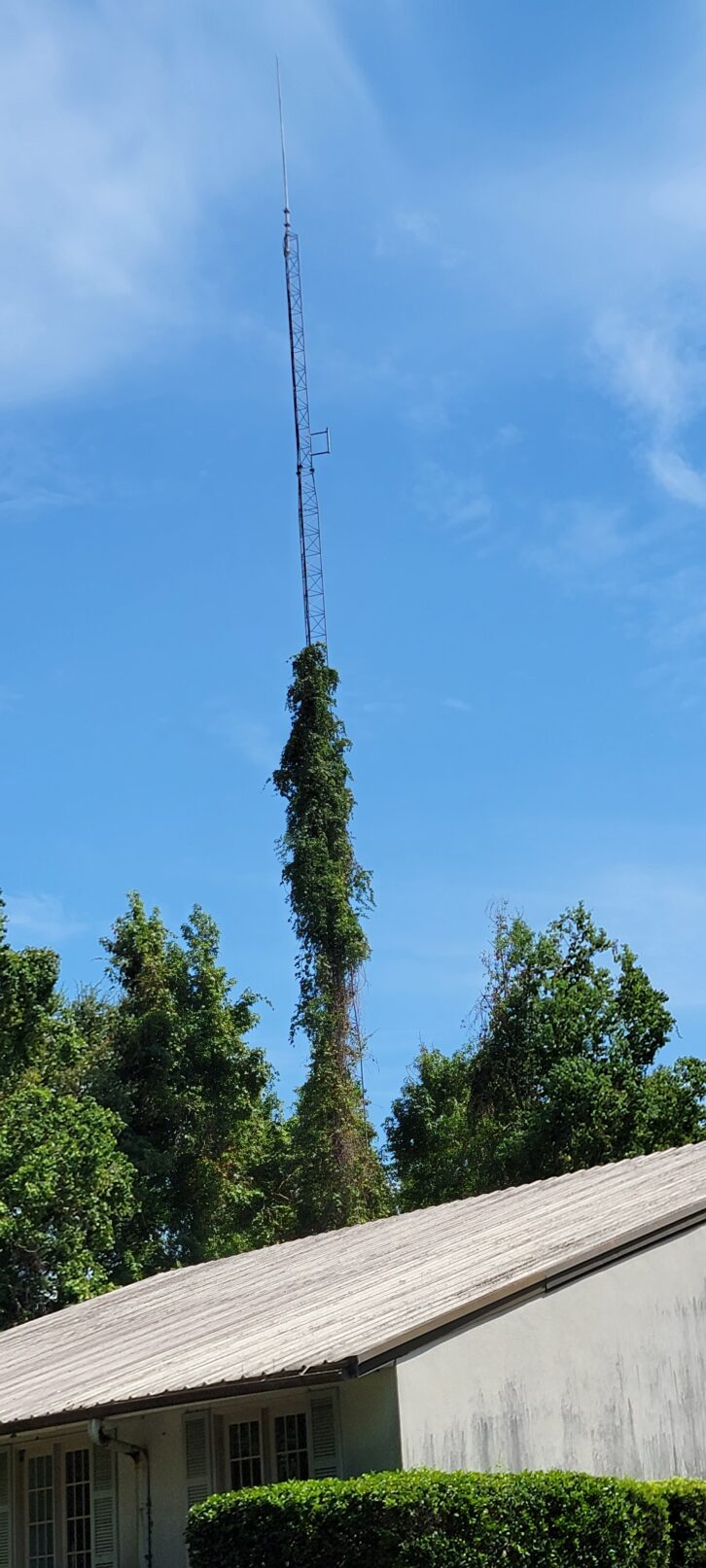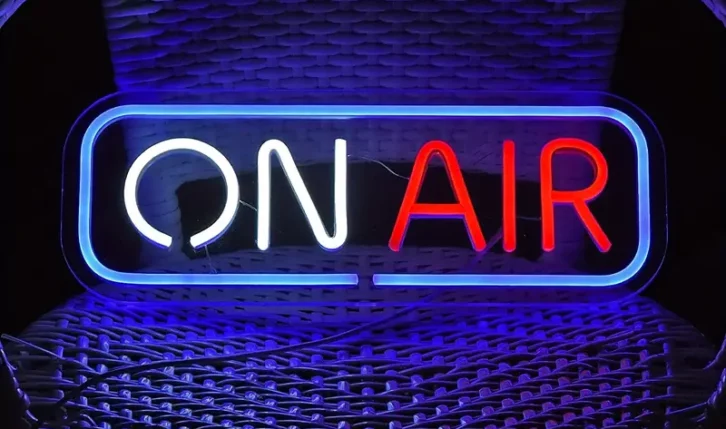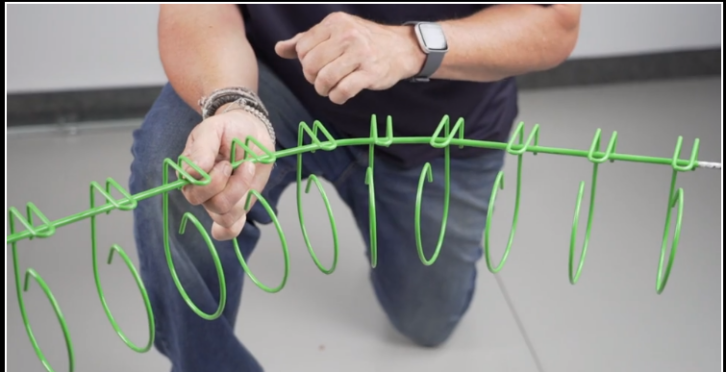If you don’t live in the southern United States you may not have had to deal with kudzu (yet).

According to the Nature Conservancy, kudzu is a semi-woody vine that was brought to the United States from Asia in 1876 as an ornamental, and it was used during the 1930s to ’50s for erosion control.
That was a mistake.
“Known as ‘mile-a-minute’ and ‘the vine that ate the South,’ this creeping, climbing perennial vine terrorizes native plants all over the southeastern United States and is making its way into the Midwest, Northeast and even Oregon,” the organization states on its website.
The accompanying photo shows kudzu at work and offers a great example of why you need to inspect your tower sites regularly.
I’m curious how this AM station stays on the air when it rains, as the vine will have grown right across the base insulator.
Dan’s busy browser
Frequent contributor Dan Slentz has been perusing the World Wide Web again and brings us several more useful discoveries.
The first is a cool neon-style LED “on air” sign that is powered by USB and costs under $20. Dan found it on Temu and says he can’t believe how bright the sign is. A 5VDC wall adaptor will power it. (It literally is a “cool” find because it generates very little heat.)
Dan says this would be useful at small studios, remote broadcast locations and podcast setups. Head to www.temu.com and search “neon on air light.”

Dan’s next find is appropriate for this time of year. It’s a web-based tool to predict sun outages and sun interference for geostationary-orbit satellites.
Using the app is straightforward. You pick a satellite from the list and select C or Ku band, then enter the antenna size and choose the season. Then double-click on your location on the map. A grid at the bottom will give you a window of time when you can expect sun outage.
At www.satellite-calculations.com, scroll down to Sun Outage Prediction Tool.
Finally, if you need to route cables, check out the fun and interesting catalog of a New York-based company called Snake Tray. It provides a variety of cable trays, from simple and inexpensive to larger and heavier-duty models. You can download all 100+ pages of the catalog in PDF form here.

Helpful Pi
KRYZ(LP), a community station in Mariposa, Calif., secured its transmitter site network from hackers using three Raspberry Pi devices and technology from Atsign, a network services provider.
“The move to Atsign came after the station’s network programming was mysteriously switched to a Swedish radio station feed playing Scandinavian rock,” Atsign said in a release. The disruption took the radio station several hours to correct.
“Atsign and KRYZ worked together to implement a security solution that closes all of the tower’s network attack surfaces (i.e., no listening network ports) yet still allows KRYZ to receive crucial operational data from the tower so they can easily and remotely monitor their [site’s] health and status,” it said.
“Additionally, using ‘SSH No Ports,’ the station’s administrator can still access the network to administer and update the crucial network.” SSH No Ports is a technology that uses an encrypted control plane to initiate SSH connections without opening ports on your devices.
One of the Raspberry Pis is used as a jump box that allows administrators to use SSH No Ports to access and administer equipment in the shed including the other two Raspberry Pis. The second is used to process the digital audio stream using an audio tool. The third is used to monitor the transmitter’s health and status, and to send alerts if there are problems.
You can read a description of this project here at “Secure Your Radio Station With Networking 2.0.”
Feed the grapevine! Workbench submissions are encouraged and qualify for SBE recertification credit. Email johnpbisset@gmail.com.






